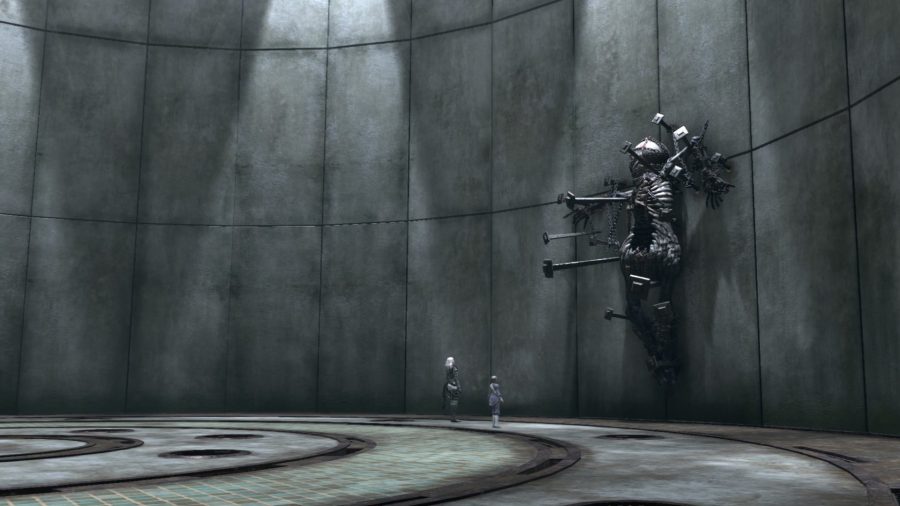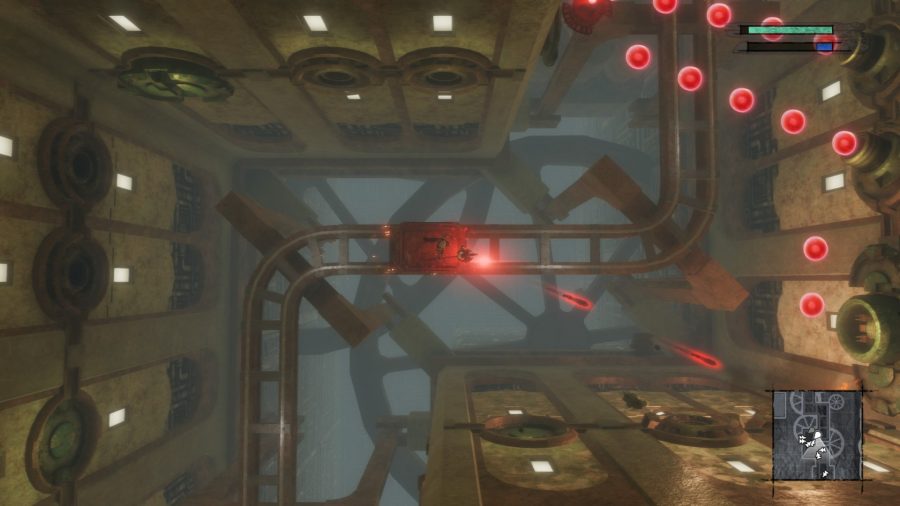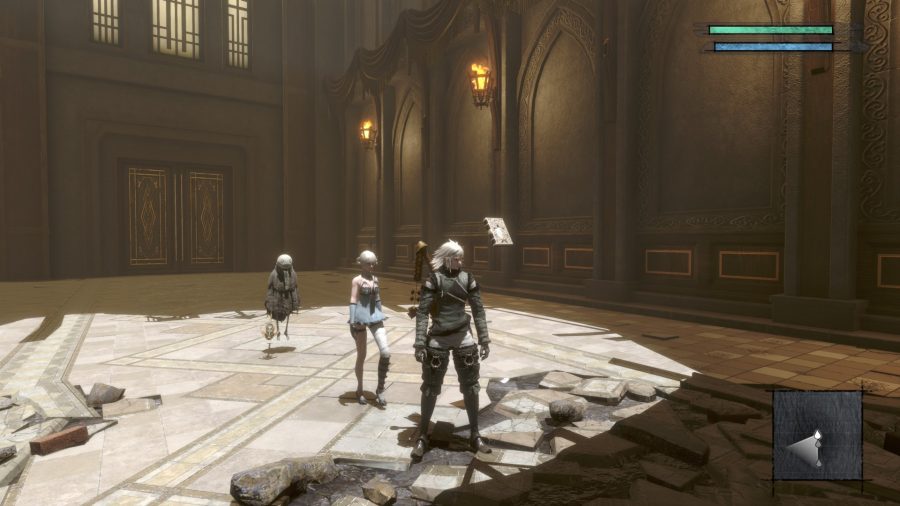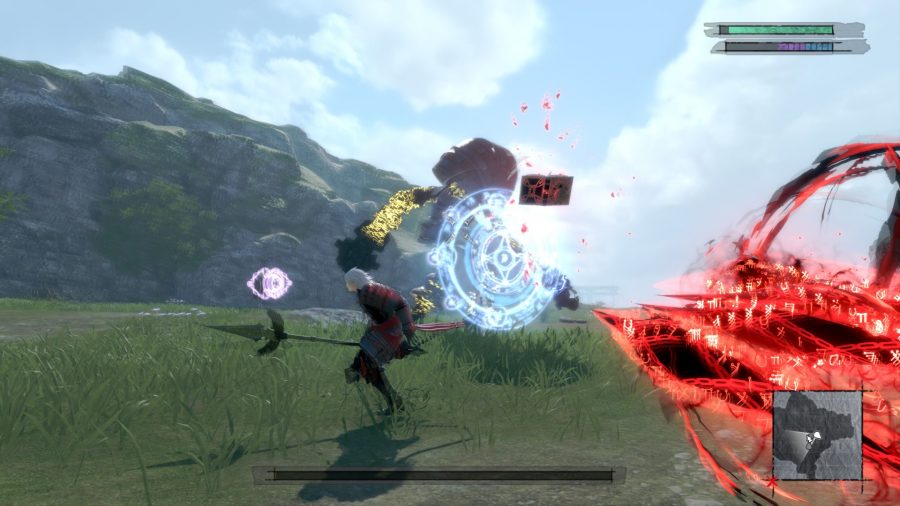Nier Replicant review – Nier-ly great
In the not-so-distant year of 2053, a young boy huddles in the ruins of a supermarket clutching a metal pipe. It’s summertime, at least by the old calendar’s reckoning, but snowflakes whip through the abandoned city streets. Shadowy figures approach, and the boy can think only of protecting his ailing younger sister. An ominous book lies on the floor nearby, tempting him with the power to take on any foe.
So begins Neir Replicant ver.1.22474487139…, a modernised “version upgrade” of the original, 2010 Japanese release of Nier. Like its sequel Nier: Automata, Replicant tells an earnest story that unfolds across a variety of genres, switching from character action, to platforming, to bullet hell, to text over an empty background. This new edition features a welcome refresh of the original’s primitive PS3 visuals, updated combat, new voice acting by the original cast, and a polished script. But the PC port? Not so fresh.
After the gloomy prologue, Replicant leaps forward 1,400 years to what appears to be a simpler and more idyllic time. Again, we’re introduced to a boy who is worried about his younger sister, who is sick with a mysterious illness. Finding a cure for her disease sets you on a path that winds through ancient shrines, a desert city carved from stone, a magical forest, and an underground military weapons factory, just to name a few.
Along the way you meet some memorable characters: there’s Emil, a wealthy but unshakably kind boy whose gaze turns people to stone; and Grimoire Weiss, a sentient and haughty book who provides magical combat powers and pompous condescension throughout your journey. Then there’s Kainé, a powerful but troubled swordswoman who curses a lot and spends the entire game in a distractingly incongruous nightgown.
There’s no way to talk directly about Replicant’s story beyond this without spoiling things. In any case, the individual beats are less important than what Nier accomplishes as both a mood piece and an extended rumination on dualism – the notion that our physical bodies and our souls are distinct entities that can be understood separately and even decoupled from one another.
Nier’s clunky combat has been updated, resulting in fluid and cinematic fights
This takes place across several dozen hours spent criss-crossing a small world of connected zones, and it’s this map layout that betrays Replicant’s PS3-era game design more than anything else. The world isn’t large, but traveling can be a real chore – in many cases, you’ll have to run through enemy-infested areas and sit through multiple loading screens to get to the next leg of whatever errand you’re on. Some of Nier’s quests take delightfully surprising turns, but a lot of them could be torn straight from an MMORPG tutorial: gather X resources, courier this package to the next town over, kill some local wildlife – you know the drill.
More like this: Here are the best PC games to play right now
Fortunately, Nier’s original, clunky combat system has been updated, with the remake’s version supervised by Platinum Games’ senior game designer Takahisha Taura, who also worked on Automata. The result is fluid and cinematic fights that allow you to experiment with melee combos and magic abilities to your heart’s content, although I settled on a couple of good all-rounder spells (thank you, Dark Blast spam) and combat techniques early on that saw me through to the credits without much adjustment. It all looks much cooler now, with better character models and animation, a dramatically swooping camera, and combos that send you flipping through the air and landing flurries of jabs on hapless foes.
On normal difficulty, at least, Replicant never pushes back at you all that hard. Most of the boss fights are spectacular setpieces packed with waves of big balloon-like projectiles and monstrosities that fill up most of the screen, but it’s rare that I feel seriously threatened with the prospect of having to attempt the fight again.
Replicant’s meditations on what it means to be human mill about comfortably in well-trodden territory
But you will have to fight them again if you want to see all of Replicant’s multiple endings. To get the full story of Nier you have to play the core of the campaign several times: once to establish a baseline, and a second time to see alternative perspectives and additional cutscenes that fill out a seismic reveal at the end of the story. With that context in hand, re-encountering the bosses you thoughtlessly put down your first time through takes on an entirely new tone. You’re more aware of what’s motivating these frightful creatures the second time around, and those initially exciting monster battles become melancholy conclusions to tragedies when you encounter them again.
It’s a gimmick that Nier: Automata would go on to use to greater effect. Coming to Replicant after having played the sequel, it’s unmistakably an earlier effort, and the narrative twists added after the first playthrough are less adventurous and transformative than in Automata. Some of the writing in Nier is weak, too – several characters are introduced for the sole purpose of dying and making another character (and thus, you) sad, and the explanation for Kainé’s outfit is a textbook case of SungWon Cho’s Thomas Manga syndrome. This sits alongside some genuinely touching prose that delves deep into characters’ inner lives: the bonds between Emil and Kainé, and the people they’ve loved during their difficult lives, make for some of Replicant’s most stirring moments.
Asking players to repeat hours of the game to see key pieces of narrative speaks to a unique level of self-importance that Replicant doesn’t quite earn. Its meditations on what it means to be human mill about comfortably in territory that’s been well-trodden by Philip K. Dick and the stories he inspired, including the Blade Runner films from which Replicant draws its English subtitle. Much of what lends Replicant its particular gravitas is aesthetic – specifically the moody, desaturated colour palette and the phenomenal soundtrack, which has been re-recorded and expanded for the new edition. To be completely fair, this is also true of Blade Runner.
This modern version of Nier does seem aware that forcing players to chase endings through multiple playthroughs can wax a bit tedious. A new auto-battle system does help expedite combat if you’re just trying to blast through another playthrough to see a new conclusion or cutscene.
Unfortunately, the PC port comes with plenty of problems. There are no options for VSync and framerate limit, which is important because running it above 60fps speeds Replicant’s animations up, making boss fights much harder than they should be. A regular stutter, which seems to be linked to a controller issue on Steam, is equally annoying – mine would periodically disconnect during these stutters, so I suspect it has something to do with how it’s handling controller detection with Steam rather than poor optimisation. Whatever the culprit turns out to be, it’s not much fun to deal with in the middle of a fight.
Despite its faults and foibles, Nier Replicant’s atmosphere is compelling enough to keep me playing through all of its endings. Its motley cast of characters (broadly drawn and badly costumed though they may be) are lovable – I want to bring them closure, to see what’s different in each playthrough, or how things might have changed if I’d made a different choice.
Convinced? Grab Nier Replicant ver.1.22474487139 here
I’ll not give anything away about the new ending, other than to say that it manages the impossible task of making the preceding 30 or so hours of repeated boss fights, fetch quests, and collectible hunting feel worthwhile – particularly if you’ve already finished Nier: Automata. It’s clear that Nier loves its main characters a lot, and when the final credits roll, I know I do too.
So despite the age of the source material; despite the naïve undergraduate sense of pride in its own science fiction daydreams; despite its insistence on making you wait to experience its best narrative turns; and despite its technical foibles, Nier Replicant is a rewarding and unique journey through what can feel like a sketchbook kept underneath a curious and creative teenager’s bed. There are compelling ideas here, and often it’s what’s hinted at, rather than what’s actually on the page, that’s truly fascinating.




